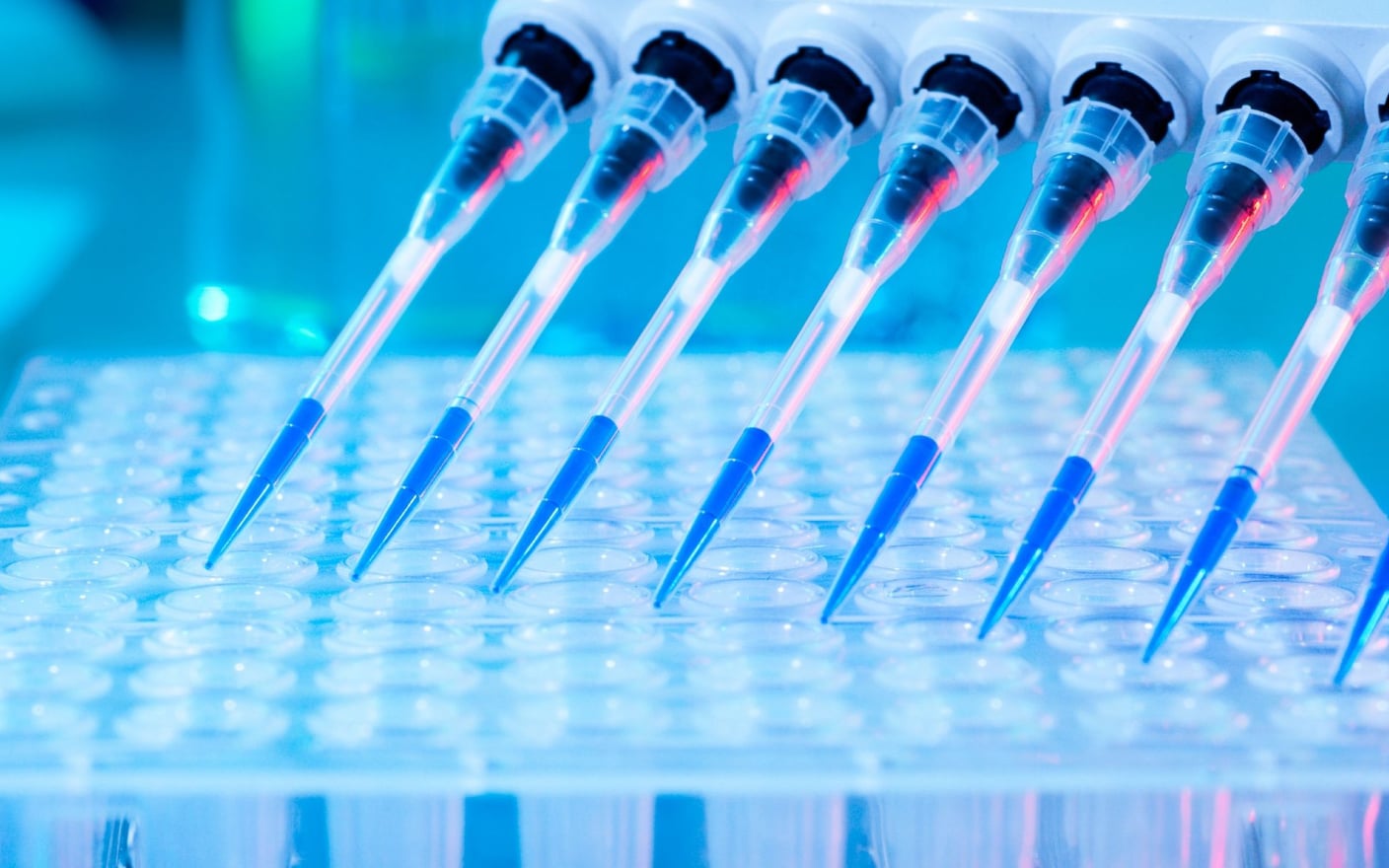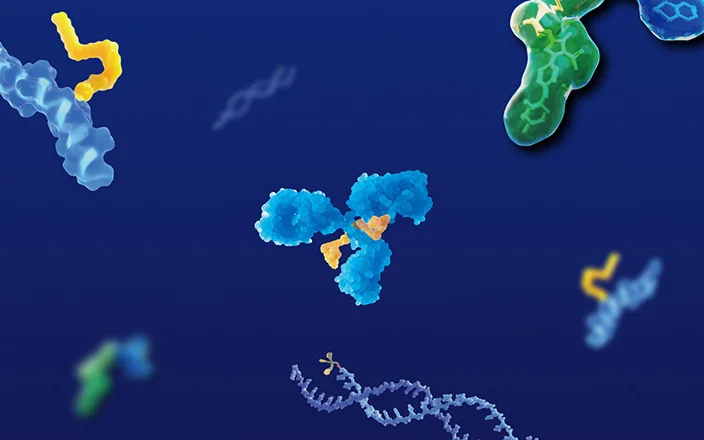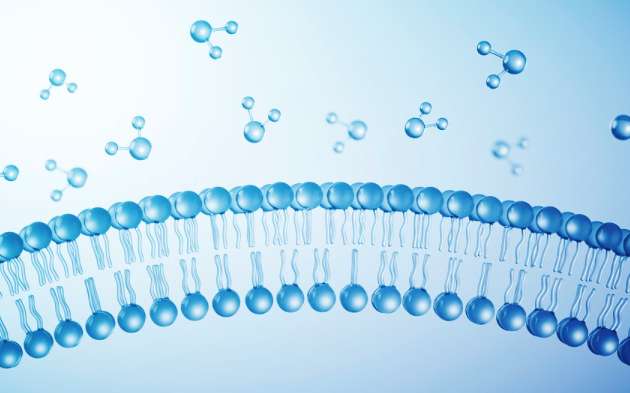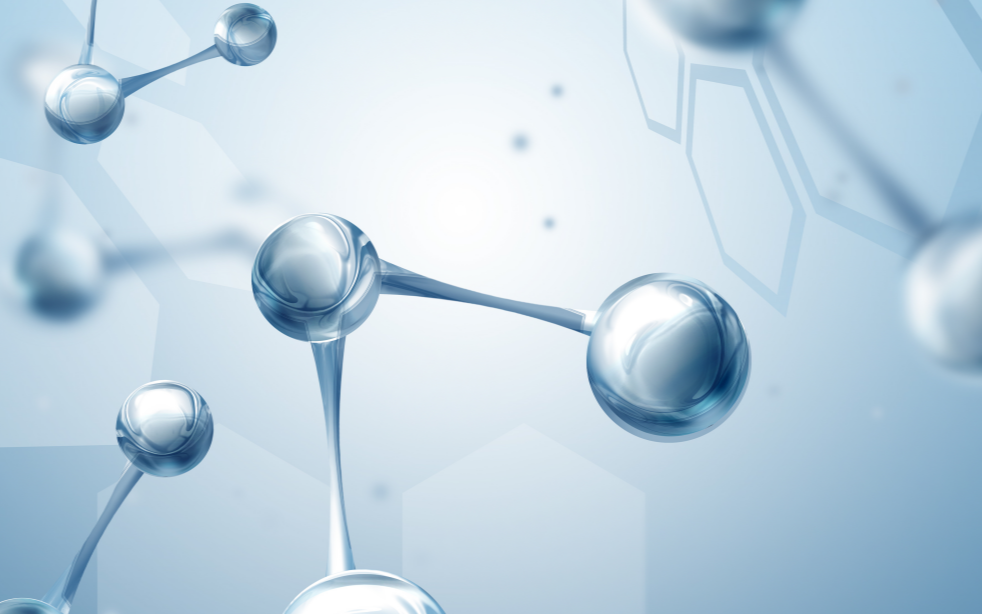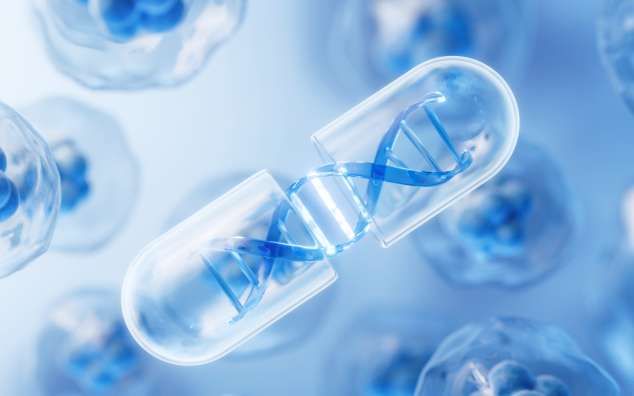Among various drug mechanisms of action, the concept of drug design based on covalent inhibition has gradually gained appreciation and utilization. It offers advantages that non-covalently bound drugs are difficult to achieve in fields such as oncology, virology, and diabetes [1]. These advantages include more lasting therapeutic effects, lower therapeutic doses, and reduced susceptibility to drug resistance.
Most drug targets are nucleophilic proteins, allowing them to act as excellent nucleophiles with electrophilic active groups. Covalent drugs function as small molecular compounds with electrophilic groups that can bind to these targets. The protein targets of covalent inhibitors primarily focus on cysteine clusters. Glutathione (GSH) is prevalent in various human tissues and organs. It is often utilized to evaluate the “warhead” activity of covalent inhibitors due to its cysteine content and thiol structure. Additionally, it is also crucial to evaluate whether free covalent inhibitors can be eliminated by metabolic enzymes in vivo during the development of covalent inhibitors. This article will introduce two GSH conjugation models—the chemical binding model and the enzymatic binding model—by detailing their properties, evaluation strategies, and applications.
Structure and function of glutathione
a) Structure of glutathione
Glutathione is a tripeptide compound containing γ-amide bonds and sulfhydryl groups, composed of glutamic acid, cysteine, and glycine. There are two forms of glutathione reductase (G-SH) and oxidized (G-S-S-G) and under physiological conditions, reduced GSH accounts for the vast majority. The molecular formula of reduced GSH is C₁₀H₁₇O₆SN₃. Its chemical structure is illustrated in Figure 1 [1] . GSH is present in almost every cellular tissue of the body, especially in the kidney, liver, and red blood cells of animals, at concentrations of 0.5-10 mmol/L [2].

Figure 1. Chemical structure of reduced GSH
b) Function of glutathione and its importance in research and development
GSH plays a crucial role in various biological activities; it maintains the body’s redox balance, participates in cellular antioxidant responses, facilitates detoxification, regulates cell proliferation, and acts as a neuromodulator and neurotransmitter in the nervous system [3-6].
In the research and development of covalent inhibitors, the thiol active group of GSH is commonly used to mimic the thiol group of target proteins and study its affinity for covalent inhibitors, specifically assessing the chemical binding ability under non-enzymatic conditions for active compound screening. Additionally, much of the research on GSH centers on its detoxification function. The primary mechanism involves the combination of reduced GSH with free radicals, converting them into metabolizable acids, thereby accelerating their excretion and protecting organs from damage, thus achieving detoxification. Furthermore, glutathione reductase can participate in carboxymethyl and transpropylamino reactions, contributing to the physiological role of protecting liver function [4, 5]. To mitigate liver damage caused by tumor drugs, chemotherapeutic agents are often combined with GSH, effectively reducing their toxic side effects and protecting the patient’s liver. The foundation of this detoxification function lies primarily in the presence of an active thiol group on the cysteine side chains in GSH. This characteristic is also frequently used to assess whether free covalent inhibitors that do not bind to target proteins in vivo can be removed by glutathione S-transferase, making it a key factor in the safety evaluation of covalent inhibitors.
Chemical binding model of glutathione and its application
a) Establishment of the GSH chemical binding model
We developed a study model to assess the non-enzymatic binding (chemical binding) of GSH to compounds in vitro. The method involves adding a GSH working solution to a buffer solution to form a reaction system at a specific concentration. The mixture is then incubated at 37°C for various time points, during which the remaining amount of compounds is measured. The elimination half-life of the compounds bound to GSH is calculated based on their remaining ratios at each time point. In this detection, “M + 307” serves as a potential detection channel for the binding product to help assess the binding ability of the compounds to GSH.
To validate the method’s feasibility, we selected the marketed covalent inhibitors afatinib (for lung cancer) and ibrutinib (for lymphoma) as test compounds, assessing their binding ability to GSH using this approach. The results, shown in Figure 2, indicate that afatinib binds to GSH rapidly, with a half-life of 22.5 minutes, whereas ibrutinib binds more slowly, with a half-life of 331 minutes. According to the literature [7], the concentration of afatinib decreased to approximately 29% of its initial level after a 60-minute reaction with GSH, while the binding of ibrutinib to GSH took longer to show a decrease in concentration, aligning with our experimental results. The results fully demonstrate the feasibility of our experimental system for GSH chemical binding reactions.

Figure 2. Chemical binding of afatinib and ibrutinib to GSH, respectively
b) Application of GSH chemical binding model
Screening for active "warheads" of covalent drugs
Covalent drugs are small molecular compounds with electrophilic groups that can bind to target proteins, thereby inhibiting their biological functions or targeting them for degradation [8].
Covalent inhibitors often contain hydrophilic functional groups such as acrylamide and β-lactam, which can chemically react with specific amino acid residues in target proteins to form covalent bonds. Acrylamides can covalently bind to cysteine clusters on target proteins, making them commonly referenced as electrophilic groups in the structural design of covalent inhibitors. As illustrated in Table 1, neratinib, dacomitinib, and zanubrutinib are all recent FDA-approved covalent inhibitors containing acrylamide.
|
Compound |
Structural formula |
Usage |
Launch date |
|
Neratinib |
|
Breast cancer |
2017 USA |
|
Dacotinib |
|
Non-small cell lung cancer |
2018 USA |
|
Zanubrutinib |
|
Cell lymphoma |
2019 USA |
Table 1. Three covalent inhibitors containing acrylamide
Since the activity of covalent inhibitors is key to the success of treatment, neither activity is too strong to result in off-target nor activity too weak to bind. To rationally screen the activity of covalent inhibitors, small molecules containing cysteine thiols from GSH can be used to mimic thiols on target proteins in vivo, allowing us to assess the warhead activity of covalent inhibitors such as acrylamide using our established GSH binding experimental model.
Guiding the comparison of affinities of the same series of compounds
The chemical binding model of GSH allows us to determine the half-life of GSH binding to compounds. This data can be utilized to compare electrophilicity among structurally similar compounds, guiding structural modifications and optimization of lead compounds. As shown in Figure 3, compounds E, F, G, and H are four structural analogues. Our experimental results demonstrate significant differences in GSH binding among the four compounds, providing a scientific basis for chemists in screening active compounds.

Figure 3. Comparison of chemical binding of structurally analogous compounds to GSH
Guiding the study of detoxification pathways under the regulation of non-enzyme conjugation
Non-enzymatic conjugation can assist the body in detoxification. For instance, the aminoazo dye MAB can undergo oxidation and chemically combine with GSH to form a conjugate for detoxification, as illustrated in Figure 4 [9]. While this entirely non-enzymatic detoxification pathway is not the predominant mechanism in organisms, the binding product, in this case, constitutes 20% of the total biliary conjugate, suggesting that non-enzymatic binding of the studied compounds is essential for exploring their metabolic pathways.

Figure 4. In vivo nonenzymatic metabolic pathways of MAB
The GSH chemical binding model we established and its applications, as described above, are valuable for screening covalent inhibitors with specific affinities for target proteins. When a compound binds to a target protein in vivo, any unbound compound must be rapidly eliminated to avoid off-target effects. Therefore, it is essential to establish a study model to assess the ability of such compounds to be removed by metabolic enzymes.
Enzymatic binding model of GSH and its application
a) Structure of glutathione S-transferase
Glutathione S-transferase (GST) is a enzyme superfamily widely present in human cells, followed by GSTA1, a major isoform enzyme [10]. GST is mainly divided into three categories: cytosolic GST, mitochondrial GST, and microsomal GST. Cytosolic GST is the most commonly used research system at present. Cytosolic GST is a homodimer or heterodimer composed of two subunits, each with a molecular mass of 23 ~ 30 kDa and composed of 199 ~ 244 amino acids. Different combinations of subunits form a variety of GST subtypes, the main subtypes are Alpha, Mu, and Pi. A detailed subtype classification is shown in Table 2 [11, 12].
|
Superfamily |
Species |
Enzyme |
Subunit structure |
|
Cytoplasmic type |
Alpha |
GST A1-1, A2-2, A3-3, A4-4, A5-5 |
Dimer |
|
Cytoplasmic type |
Mu |
GST M1-1, M2-2, M3-3, M4-4, M5-5 |
Dimer |
|
Cytoplasmic type |
Pi |
GST P1-1 |
Dimer |
|
Cytoplasmic type |
Sigma |
GST S1-1 |
Dimer |
|
Cytoplasmic type |
Theta |
GST T1-1, T2-2 |
Dimer |
|
Cytoplasmic type |
Zeta |
GST Z1-1 |
Dimer |
|
Cytoplasmic type |
Omega |
GST O1-1, O2-2 |
Dimer |
|
Mitochondrial form |
Kappa |
GST K1-1 |
Dimer |
Table 2. Isoform classification of major GSTs
b) Function of GST and its importance in research and development
GST can regulate various processes in the body, impacting drug metabolism and disease treatment. This is evident in several aspects. First, GST catalyzes the binding of endogenous and exogenous substances to GSH, facilitating metabolism and detoxification, as illustrated in Figure 5 [13]. Secondly, GST can participate in regulating cellular pathways by binding to receptors to inhibit the JNK signaling pathway and modulate apoptosis, as shown in Figure 6 [14, 15]. Additionally, GST can work alongside multidrug resistance proteins [4] to excrete GSH conjugates and is involved in biological processes such as steroid and prostaglandin biosynthesis [15, 16] and tyrosine catabolism [17].
Since many chemotherapeutic drugs, including cisplatin and covalent inhibitors, are substrates of GST, we aim to minimize damage to healthy cells while ensuring drug efficacy. Therefore, the research on GST is primarily divided into two directions. Firstly, it involves selecting compounds that can be metabolized by GST to leverage its detoxification effects and reduce the toxic side effects of chemotherapeutic drugs. Secondly, GST is often highly expressed in many tumor cells [14, 15]. Our goal is to select compounds with moderate metabolism to ensure effective therapeutic efficacy. Thus, establishing the enzymatic binding reaction of GSH will provide guidance for evaluating the safety and efficacy of compounds in vivo.

Figure 5. Principle of GST enzyme catalysis

Figure 6. Principle of GST enzyme regulation of cellular pathways
c) Establishment and evaluation strategy of the GSH enzymatic binding model
We have successfully developed an in vitro assessment of the GSH enzymatic binding model after a series of validations. In experiments assessing GST metabolic stability, liver cytoplasm served as the incubation system, with 4-nitrobenzoyl chloride (PNBC) and ethacrynic acid (EA) selected as substrates and inhibitors of GST, respectively [18].
In the cytoplasm of liver cells, the metabolism of 4-nitrobenzyl chloride was significantly different in the presence of various concentrations of inhibitors, as shown in Figure 7.

Figure 7. Ethacrynic acid concentration screening in the cytoplasm of human hepatocytes
The compounds were incubated in liver cytoplasm over a series of time points, and their status as GST substrates was determined by comparing their metabolic trends in the presence and absence of inhibitors. Under this validation condition, the half-life of substrate 4-nitrobenzyl chloride was 17.4 minutes, while the half-life in the literature was 15 min. The validation data align well with the literature [19], indicating that the GST metabolic stability experimental protocol we established is feasible.
As shown in Figure 8, in the incubation system without ethacrynic acid, the half-life of the compound was 18.7 min. In the incubation system with ethacrynic acid, the half-life was greater than 145 minutes, and the clearance rate was significantly reduced, indicating that compound A was a substrate of GST.

Figure 8. Metabolism of compounds in the cytosol of human hepatocytes
Although GST family members share a common ancestor, different classes of GST isoforms exhibit substrate specificity and functional diversity in catalytic activity due to gene duplication, recombination, and mutation [20]. Consequently, drug metabolism may vary among individuals. If further determination of the metabolized subtype is needed, it can be verified using recombinant enzymes. We developed a strategy for assessing the metabolic stability of three major recombinant isoforms: GSTA1, GSTM1, and GSTP1.
Comprehensive application of GSH chemical binding and enzymatic binding models
The GSH chemical binding and enzymatic binding models are collectively termed the GSH binding model, enabling more accurate interpretation of relevant data in the research and development of covalent inhibitors. We have successfully established a high-throughput and automated GSH binding research model to efficiently provide data support for researchers.
Case study
Piperazine analogues are frequently utilized in developing covalent inhibitors due to their ability to inhibit proteins encoded by the KRAS oncogene. Because piperazine analogues also contain acrylamide, which can bind to GSH, researchers evaluated the chemical and enzymatic binding abilities of multiple piperazine analogues with GSH, as shown in Figure 9 [21]. The x-axis represents the half-life of chemical binding, while the y-axis represents the enzymatic reaction half-life of the compounds. The study aimed to focus on the compounds highlighted in the upper left corner, as these compounds not only exhibit chemical activity bound to GSH but also are not metabolized too quickly, allowing for effective GST detoxification. Currently, using this screening method, researchers have identified a novel KRAS inhibitor, MRTX849, in combination with other experiments. Its structural formula is depicted in Figure 10 [21]. The inhibitory effect can reach as high as 94%, and it is anticipated to be marketed as the second KRAS inhibitor. We subsequently conducted a series of validations using the commercial compound MRTX849, and the test results aligned with our initial speculations in the figure.

Figure 9. Comprehensive assessment of enzymatic and chemical binding capabilities of various piperazines

Figure 10. Chemical structure of MRTX849
Concluding remarks
In summary, a comprehensive assessment of both non-enzymatic and enzymatic binding of compounds to GSH can simultaneously investigate the electrophilicity and metabolism of covalent inhibitors, offering better insights into compound properties. Currently, an increasing number of researchers studying covalent inhibitors opt to conduct GSH binding experiments alongside GST enzyme metabolic stability experiments. This dual approach allows for the evaluation of compound “warhead” activity while assessing the in vivo clearance ability, facilitating the screening of compounds with appropriate reactivity, selectivity, and safety. The representative structures of targeted amino acids studied by covalent inhibitors are presented in Table 3 [22], with the primary binding sites focused on cysteine clusters.
We are continually exploring new models for assessing binding site abilities, with lysine poised to become the next research hotspot among targeted amino acids due to its numerous protein binding sites and extracellular locations.
|
Targeted amino acid |
Covalent group |
|
Cysteine |
|
|
Methionine |
|
|
Lysine |
|
|
Histidine |
|
|
Serine |
|
|
Threonine |
|
|
Tyrosine |
|
Table 3. Covalent group classification for specific amino acids
Talk to a WuXi AppTec expert today to get the support you need to achieve your drug development goals.
Authors: Yixin Luo, Leilei Qin, Xiangling Wang, Genfu Chen
Committed to accelerating drug discovery and development, we offer a full range of discovery screening, preclinical development, clinical drug metabolism, and pharmacokinetic (DMPK) platforms and services. With research facilities in the United States (New Jersey) and China (Shanghai, Suzhou, Nanjing, and Nantong), 1,000+ scientists, and over fifteen years of experience in Investigational New Drug (IND) application, our DMPK team at WuXi AppTec are serving 1,600+ global clients, and have successfully supported 1,500+ IND applications.
Reference
[1] Wang Xiaowei, Zhang Hongyan, Liu Rui. Research Progress of Glutathione [J]. Chinese Journal of Pharmaceutics, 2019, 17 (4): 141-148.
[2] Watanabe T, Sagisaka H, Arakawa S, Shibaya Y, Wantanabe T, Igarashi I, Tanaka K, Totsuka S, Takasaki W, and Manabe S (2003). J Toxicol Sci., 2003, 28, 455.
[3] Dai Tao, Yin Zhifeng, Wang Liangyou. Progress in clinical application of reduced glutathione. Journal of Chengde Medical College [J], 2014, 31 (5): 432-435.
[4] Fan Yueping, Yu Jianchun, Yu Yue, etc. Physiological Significance of Glutathione and Comparison and Evaluation of Various Determination Methods [J]. Chinese Journal of Clinical Nutrition, 2003, 11 (2): 58-61.
[5] Winterbour N, Christine C. Regulation of intracellular glutathione. Redox Biology [J], 2018, 22 (2019): 101086.
[6] Liu Aihua. Mechanism of Reduced Glutathione and Its Clinical Application. Guide of China Medicine [J], 2013, 11 (9): 391-393
[7] Yoshihiro Shibata and Masato Chiba. The Role of Extra-Hepatic Metabolism in the Pharmacokinetics of Targeted Covalent Inhibitors Afatinib, Ibrutinib, and Neratinib. ASPET Journals, Published on December 10, 2014 as DOI: 10.1124/dmd. 114.061424.
[8] Lagoutte, R., Patouret, R., Winssinger, N., 2017. Covalent inhibitors: an opportunity for rational target selectivity. Current Opinion in Chemical Biology 39, 54 – 63.
[9] Brian Ketterer. The Role of Glutathione Nonenzymatic Reactions of in Xenobiotic Metabolism. DRUG METABOLISM REVIEWS, 13 (1): 161- 187
[10] Baojian Wu and Dong Dong. Human cytosolic glutathione transferases: structure, function, and drug discovery. Trends in Pharmacological Sciences [J], December 2012, 33 (12): 656-668.
[11] Yang Chen, Yunyue Pan, Tian Ran. Progress of Glutathione S-transferase in Mammals [J]. Journal of Nanjing University of Science, 2021, 44 (1): 91-98.
[12] HAYES J D, FLANAGAN J U, JOWSEY I R. Glutathione transferases. Annual review of pharmacology and toxicology [J], 2005 (45): 51-88.
[13] Sun Lulu, Dong Hongliang. Lipid Peroxidation, GSH Depletion, and SLC7A11 Inhibition are Common Causes of EMT and Ferroptosis in A549 Cells, but Different in Specific Mechanisms. DNA and Cell Biology [J], 2012, 40 (2): 172-183.
[14] Pljesa-Ercegovac, Marija; Savic-Radojevic, Ana; Matic, Matija; Coric, Vesna; Djukic, Tatjana; Radic, Tanja; Simic, Tatjana (2018). Glutathione Transferases: Potential Targets to Overcome Chemoresistance in Soslid Tumors [J]. International Journal of Molecular Sciences, 19 (12): 3785-3806.
[15] CHO S G, LEE Y H, PARK H S, et al. Glutathione transferase S-mu modulates the stress-activated signals by suppressing singapoptosis signal-regulating kinase 1. Journal of biological chemistry [J], 2001, 276 (16): 12749-12755.
[16] JAKOBSSON P J, MANCINI J A, RIENDEAU D, et al. Identification and characterization of a novel microsomal enzyme with glutathione-dependent transferase and peroxidase activities. Journal of biological chemistry [J], 1997, 272 (36): 22934 -22939.
[17] Sheehan, D. et al. (2001) Structure, function and evolution of glutathione transferases: implications for classification of nonmammalian members of an ancient enzyme superfamily. Biochem [J]. 360, 1 – 16
[18] Brian Ketterer DRUG METABOLISM REVIEWS, 13 (1), 161- 187
[19] Eric D. Clarke, Daren T. Greenhow & David Adams Metabolism-Related Assays and Their Application Agrochemical Research: Reactivity of Pesticides with Glutathione and Glutathione Transferases. Society of Chemical Industry [J]. 1998, 54:385-393.
[20] BURNS C M, HUBATSCH I, RIDDERSTRO M, et al. Human glutathione transferase A4-4 crystal structures and reveal the basis of high catalytic efficiency with toxic lipid peroxidation product [J]. Journal of molecular biology, 1999, 288 (3): 427-439.
[21] Jay B. Fell, John P. Fischer, Brian R. Baer, James F. Identification of the Clinical Development Candidate MRTX849, a Covalent KRASG12C Inhibitor for the Treatment of Cancer. Med. Chem [J]. 2020, 63, 6679 − 6693
[22] Wang Aoxue, Pei Junping, Wang Guan, et al. Advances in covalent inhibitors targeting specific amino acids. Progress in Pharmacy [J], 2022, Volume 46 (1): 33-46.
Related Services and Platforms




-

 In Vitro ADME ServicesLearn More
In Vitro ADME ServicesLearn More -

 Novel Drug Modalities DMPK Enabling PlatformsLearn More
Novel Drug Modalities DMPK Enabling PlatformsLearn More -

 Physicochemical Property StudyLearn More
Physicochemical Property StudyLearn More -

 Permeability and Transporter StudyLearn More
Permeability and Transporter StudyLearn More -

 Drug Distribution and Protein Binding StudiesLearn More
Drug Distribution and Protein Binding StudiesLearn More -

 Metabolic Stability StudyLearn More
Metabolic Stability StudyLearn More -

 Drug Interactions StudyLearn More
Drug Interactions StudyLearn More
Stay Connected
Keep up with the latest news and insights.














